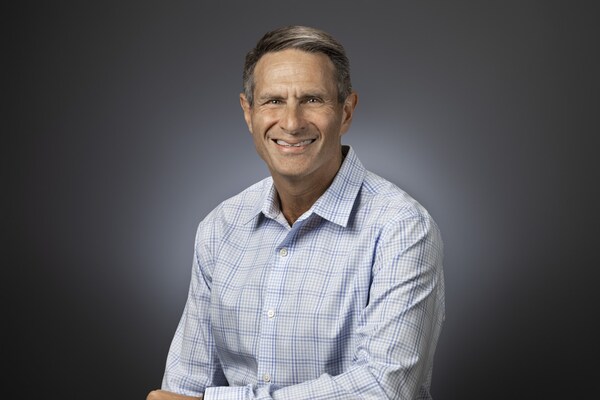Thought Leadership
SXSW 2024: Five New Consumer Trends for the C[x]O
SIGN UP FOR OUR INSIGHTS BLASTS
SXSW 2024: Pulse on Culture for the C[x]O
As an essential convergence point for marketers anticipating the future, SXSW helps businesses unveil the trends at the intersection of culture, commerce, and digital transformation that will shape a new age of consumers. As our teams emerge from SXSW, here are five consumer trends that demand attention, offering insights into what lies ahead. Connecting each trend is an opportunity to build fandom with consumers around your business.

ATHLETES AS BRANDS; A NEW FANDOM HOOK?
Brandon Marshall, former 12-year NFL wide receiver and host of I AM ATHLETE, says today’s athletes are multi-hyphenate leaders – building businesses and nonprofits, and creating identities that go well beyond the field, court or track. For brands, this offers a major opportunity to write a new playbook for partnership that positions athletes as multi-dimensional ambassadors to reach consumers who are hungry for authentic connection. For Kalen Thornton, a former NFL player and current senior PepsiCo executive, the three things to consider are authenticity, connection and distinction. Authenticity is especially crucial in today’s marketing landscape; consumers appreciate genuine connection, and it can make or break whether they transition to long-term brand fans. If CMOs can build stronger partnerships with athletes that reflect that, they’re in a better place to activate athletes as brand storytellers – in turn creating fandom with customers.
Keeping up with Jarvises: The Race to Bots with Benefits
There were few explicit sessions in the advertising track at SXSW on AI – but of those on the agenda, sessions like “Navigating Advertising Hype Cycles” made it clear marketers are over the buzz, and in the mood for clear use-cases. Here’s one to noodle on. Generative AI is ushering in subtle yet impactful changes in consumer interactions with products and services. The focus extends beyond convenience; whether stated or not, we are now in an arms race to create realistic versions of popular sci-fi bots like Iron Man’s Jarvis. In this “age of anticipation,” as Code and Theory Chairman Dan Gardner calls it, brands must stay ahead by developing or integrating with the best personal assistants available to link their consumer experiences to a broader ecosystem of value. Already, we’re seeing global brands like L’Oreal and Walmart take steps to infuse AI assistants into their brand proposition, whether by providing beauty advice or enhancing moments across the retail experience. Gardner emphasizes the imminent digital transformation of customer experiences, fueled by vast data and AI’s ability to anticipate needs rather than merely reacting. This is an opportunity for every sector, and one that requires keen collaboration between CEOs and their marketing and technology leaders.
“For too long, we’ve been looking at ‘personalization’ as the answer. That was just targeting. Now, we will begin to see industries disrupted by a reimagined approach to delivering value. We are finally at the point where AI plus data can anticipate customer behaviors. This will boost sales in the near term as well as build affinity in the future,” says Gardner.
Adulthood Canceled? Gen Z’s Mid-Life Crisis as an Experiential and Commerce Opportunity
The COVID-19 pandemic triggered seismic shifts in digital transformation, giving rise to entirely new consumer behaviors and sectors. For Gen Z, already wielding significant global purchasing power, the pandemic resulted in missed rite of passage moments, impacting independence and income security. 38% of Gen Z women feel like their lives were ‘canceled,’ and 61% of Gen Z say the pandemic has increased their feelings of loneliness, per Stagwell’s Harris Poll.
At SXSW, conversations in the advertising track like “Building Brands in the Unhappiness Era” converged around the opportunity to create positive and delightful experiences for consumers – a bulwark against the bad vibes COVID left behind. Whether that’s adopting a play-centric approach to brand expression or leaning into branded entertainment, the challenge and opportunity are clear: the most active purchasing group for the next decade is eager to make up for lost time. How will brands help them conquer this opportunity? Strategies that cultivate equity and fandom by incorporating community, connection, and experience into marketing will dominate.
Navigating the New Consumer “Political Brain”
In a polarized landscape, brands risk losing support if they enter politics improperly. Activating consumers’ “political brains” divides the base and diminishes brand support. Stagwell Chairman and CEO Mark Penn says: “At best, politics splits this country 50–50. If you get involved in politics in any way, whatever your popularity is, it [gets] cut in half. For brands like targeting mass market consumers, you cannot win. You can only win if you’re a smaller niche brand that has a group of customers that would be very compatible with your values or political values, or you’ve expressed those values during a prolonged period of time, so they’re already baked into your brand.”
To insulate themselves, Chief Communications Officers must tread carefully, avoiding making consumers feel like they’re casting a vote with each purchase. They must seek, as well, counsel from perspectives across the political spectrum, acknowledging their consumers are diffuse in their ideology as well.
Beyond the ‘Shop’ Page; Will AI Transform E-Commerce?
“Brands are at a pivotal moment in time when it comes to e-commerce,” says Lauren Kushner, CEO, Kettle. “Many retailers had a booming few years followed by some softness in their conversion funnel and they are taking a hard look at how e-commerce can work harder for them. Enter tools and experiences powered by AI.”
AI is poised to elevate e-commerce by forcing brands to rethink their online interactions, moving beyond the push to a push-and-pull cycle with their customers. With tools and experiences powered by AI, brands can create contextualized and innovative online experiences that anticipate consumer needs. Hyper-personalized recommendations and streamlined purchase flows promise to forge more meaningful connections with brands and drive conversions.
Bring Community to Commerce
As Redscout CEO Ivan Kayser tells it, a modern approach to the marketing mix places community, advocacy, and content at its core. “We are just starting to dig through the rubble of the DTC reckoning, beginning to draw lessons from rule-breaking brands that are operating from a completely new playbook. Brands that are deepening value for and with their existing customers rather than focusing solely acquisition should be watched closely.” Per a new study from Assembly and Dotdash Meredith, unveiled at SoHo House at SXSW on Monday, communities provide marketers with the chance to talk, explore, and support the motivations and values that drive consumer behavior.
The balancing act moving forward is seeking strategies that genuinely benefit the business bottom line – while engaging customers in a manner that doesn’t scream transactional. While on the ground at SXSW, Kayser has been on the lookout for measurement approaches focusing on differentiation, consumer preference, and margin. And for brands that treat every aspect of the business as an expression of the brand, greatly expanding the opportunity to build fandom with each touchpoint. If you can advance short-term revenue goals while building a cohort of customers that will follow, and purchase with you, in the future, you can crack the fandom code.
Follow Along
Related
Articles
In the News, Marketing Frontiers, Press Releases, Stagwell Marketing Cloud
Apr 02, 2025
The European Commission Expands its Partnership with UNICEPTA by PRophet to Include Media Analysis

Artificial Intelligence, In the News, Marketing Frontiers, Press Releases
Apr 02, 2025
Stagwell (STGW) Appoints John Kahan as Inaugural Chief AI Officer

In the News, Investments & Financials, Press Releases
Apr 02, 2025
Stagwell (STGW) Will Host 2025 Virtual Investor Day and Announce $5 Billion Revenue Target by End of FY29





